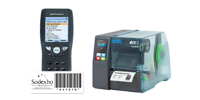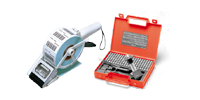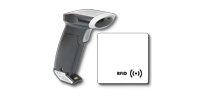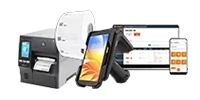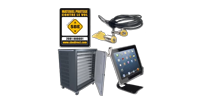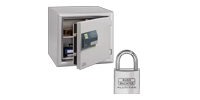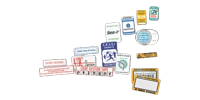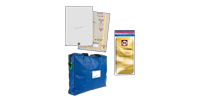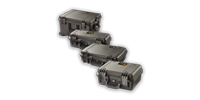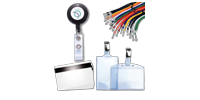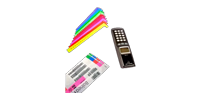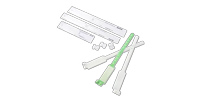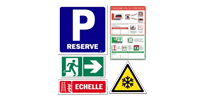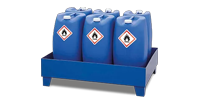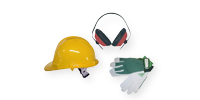Stock management, sales management, logistics...barcode scanners are nowadays essential for companies to be efficient and effective.
SBE Direct offers a wide range of barcode readers including a variety of models suitable for different areas of activity. SBE Direct offers a wide range of barcode readers comprising of a variety of models suitable for different types of activities. We have products like barcode readers, barcode scanners and autonomous barcode terminals.
Barcode scanners can read several types of barcode labels: 1D barcode or 2D barcode. Let’s see which reader is suitable for the different types of barcode and needs.
1 - Barcode scanner
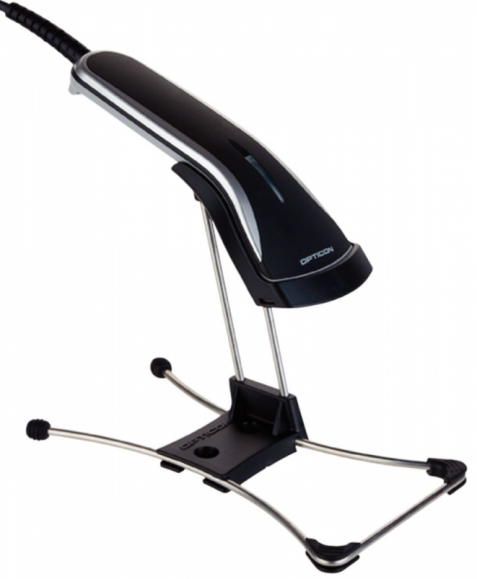
They are large surface area barcode readers and are used in various sectors, from small business to department stores, and in the medical field. These sectors use fine-trigger readers to scan labels quickly and easily to transfer and analyse information quickly and then process orders and records. For example, the CCD 6000 scanner which is the most widely used, reaches record levels of scans during holidays.
The barcode reader is a reader connected to PC or Mac computers. They read different types of codes ranging from 1D, which are basic linear barcodes, to 2D; a category including more complex codes such as QR codes.
The following is an example of a classic 1D barcode:
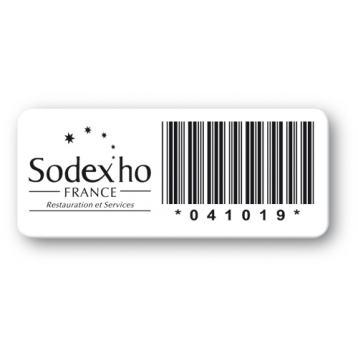
Some models offer their users an automatic mode that can only scan when the barcode is under the reading head. The user who doesn’t like clutter can put the Bluetooth barcode reader on their stand and pass the codes under the head as with the OPR 2001 auto-trigger reader. All our scanners have a fixed cable.
To find it, here’s a picture of the different scanner features we offer at SBE:
| Douchette | Poids | Vitesse | Température | Tête de lecture | Distance de lecture max |
|---|---|---|---|---|---|
| OPL-6845Z | 90gr | 100 scan/s | -5 °C to 50°C | 1D Laser | 45 cm |
| CCD SC6000 | 200 gr | 200 scan/s | -10 °C to 50°C | 1D CCD/Laser | 10 cm |
| OPR-2001 | 60gr | 100 scan/s | -5 °C to 50°C | 1D Laser | 50 cm |
| L-22X | 150gr | 100 scan/s | -5°C to 50°C | 2D imager | 10 à 60 cm |
The density of the codes read ranges from 0.127 to 1 mm for the narrowest.
2 - Wireless Barcode Reader
Portable barcode readers will make your work more convenient. This type of laser barcode reader is commonly used in activities such as inventories for shops, warehouse, or postal services. Strengths: They are light and their compact size means they are more simple and practical. They are ideal for outdoor use.
The barcode readers are distinguished from the handhelds by their gun shape. In addition, they can read several types of barcodes, 1D (one dimensional) and 2D (two dimensional). A 2D barcode reader can read 1D.
List of different codes read:・ 1 D (read by laser technology readers, uses red ray) |
Here is an example of a 2D code or QR code:
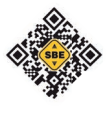
Note that barcode readers can read QR codes because they are 2D barcodes, so choose a QR code reader to scan barcodes on any type of support, even screens.
Our range consists of wired and wireless barcode readers. So which one to choose?
- The wired readers can be connected via a USB, Wedge or RS232C cable to a PC or Mac. They allow to scan your data at medium distance very quickly, especially on a fixed support in an automatic way with their detection system. Ideal for large-scale distribution, events, public institutions.
- The wireless readers have the advantage of being mobile and therefore be taken everywhere to scan barcodes with a range of 80m. They work either by Wifi or Bluetooth, which allows an instant transmission of data to your connected device. In addition, these readers can be equipped with a memory to store the maximum amount of information and then transmit it to your computer via a cable. These readers have an average autonomy of 48 hours in use, ideal for big inventories.
All our barcode readers have a very good resistance to shocks as well as to water and dust projections, conforming to the European standard IP54.
To find it, here is a table of the different characteristics of barcode scanner that we offer at SBE:
| Terminal | Stand/Cable | Autonomy | Weight | Size | Speed | Reading head | Reading distance |
|---|---|---|---|---|---|---|---|
| OPN 2001 terminal | USB cable included Optional stand | 12 hours | 29gr | 32x62x16 mm | 100 scan/s | Laser 1D Imager 2D | 20 cm |
| PX-20 | USB cable and hand strap included | 35 hours | 40 gr | 34x71x15mm | 100 scan/s | 1D Laser | 20 cm |
| OPL 9815 | Stand and cable included | 50 hours | 115 gr | 44x140x22mm | 100 scan/s | 1D-2D- Imager | 3 à 30 cm |
| OPH 3001 | USB cable included Optional stand | 40 hours | 156 gr | 58,2x180,8x23,8mm | 100 scan/s | 1D-2D- Imager | 20 cm |
| EDA51K | USB cable included Optional stand | 12 hours | 300 gr | 164x73x24,5mm | 104 scan/ s | 1D-2D- Imager | 5 à 33 cm |
| OPH 1005 | Stand and cable included | 40 hours | 140 gr | 55x136x23mm | 100 scan/s | 1D Laser | 12 cm |
| H28 | USB cable included Optional stand | 8 hours | 244 gr | 77x147x19mm | 100 scan/s | 1D -2D - Imager | 30 cm |
| H29 | USB cable included Optional stand | 8 hours | 267 gr | 71,8x175x19,5mm | 100scan/s | 1D -2D- Imager | 26 cm |
| H31/H33 | USB cable included Optional stand | 8 hours | 235 gr | 79 x 158 x 20.9 | 100scan/s | 1D-2D - Imager | 26 cm |
| Scan Mini clé USB | (Bluetooth or wired) - USB cable and wrist strap | 8 hours | 150g | 42x18x13mm | 240 scan/sec | 1D CCD | 6 cm |
The difference between our H28/H29/H31/H33 terminals
At SBE we offer a number of similar handhelds, so it can be difficult to find your way around. Below we explain the differences between the Opticon H28/H29/H31/H33 handhelds.
The H28 and H19 run on Android 6.0.1 and the H31 and H33 run on Android 9. They can read all 1D and 2D barcodes and connect via Bluetooth, Wifi, WAN, NFC and USB. However, the H29 and H33 can also connect via 4G and have GPS functionality for geolocation. These handsets all have a 16 megapixel rear camera except the H29 which is 8 megapixels. The H28 also has a 5 megapixel front camera.
These terminals are quite light and manageable: H28 weighs 308g, H29 weighs 297g and H31, H33 weighs 319g. Furthermore, the screen size is 4.3 inches for the H29 and 5 inches for the H28 and H31, H33. The biggest difference is the memory, as the H28 and H29 have 16GB while the H31 and H33 have 64GB. A SD card can be added to increase the storage capacity. The battery is a little less powerful for the H28 and H29 with 2960mAh against 4000mAh for the H31 and H33.
These terminals can withstand extreme temperatures from -20°C to 60°C and drops of over one metre. The H31 and H33 are slightly more resistant to cold and humidity.
A handheld terminal for 1D and 2D barcodes
Our portable terminals can read 1D and 2D barcodes. Here is a table summarising the barcodes that can be read:
| 1D Barcode | 2D Barcode |
|---|---|
| JAN/UPC/EAN incl. add on, Codabar/NW-7, Code 11, Code 39, Code 93, Code 128, GS1-128 (EAN-128), GS1 Databar (RSS), IATA, Industrial 2of5, Interleaved 2of5, ISBN-ISSN-ISMN, Matrix 2of5, MSI/ Plessey, S-Code, Telepen, | Aztec Code, Aztec Runes, Chinese Sensible code, Codablock F, Composite codes, Data matrix (ECC200), Passport MRZ (OCR-B), maxi Code (mode 2~5), MicroPDF417, MicroQR Code, PDF417, QR Code |
Do you want full information about barcodes for your professional activity? We cannot recommend enough that you consult the excellent Wikipedia article on barcodes.
For information on any of our products, the SBE Direct team is on hand to help.

